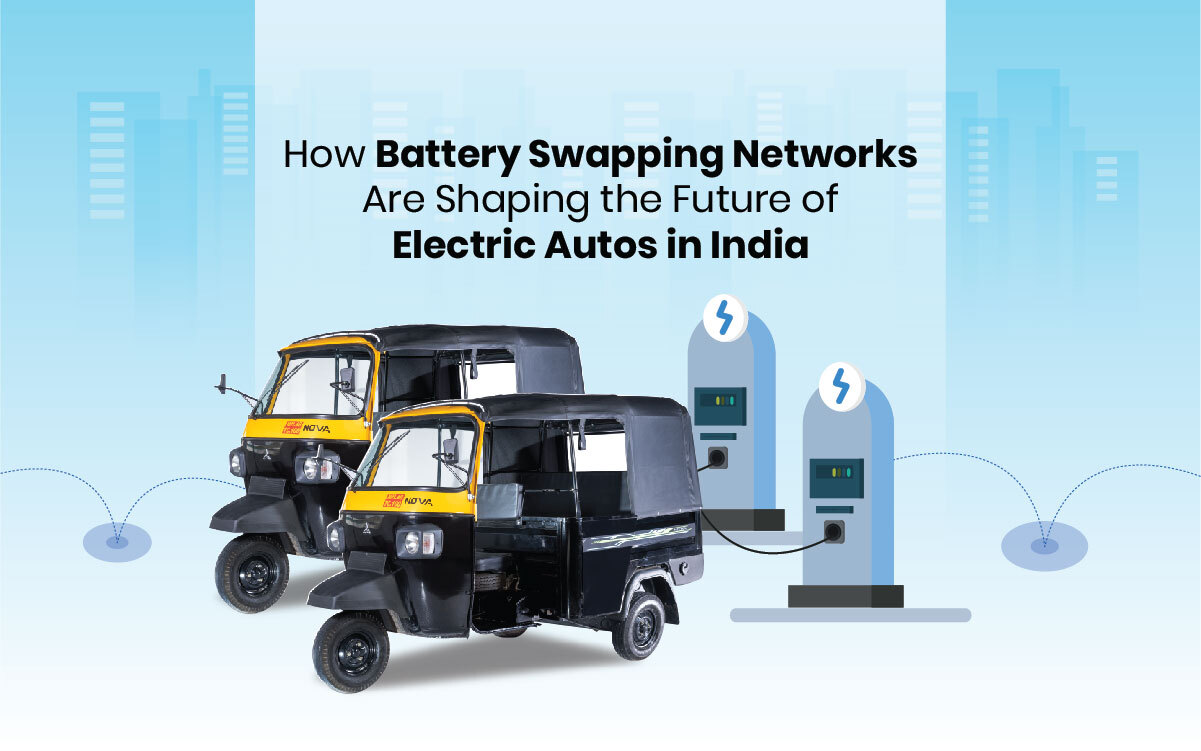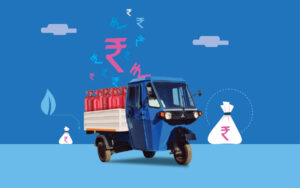Curious about how battery swapping is revolutionizing the future of electric autos in India? Let’s explore this transformative innovation driving faster adoption and sustainable mobility.
Key Takeaway Summary
- Battery swapping networks solve charging delays — a major challenge for electric auto adoption.
- They enhance uptime, productivity, and convenience for fleet operators and e-rickshaw drivers.
- Models like the Astro Nova Electric Rickshaw benefit from evolving swap-ready infrastructure.
- The future of electric auto mobility in India depends on seamless, efficient battery exchange systems.
The Future of Electric Auto Mobility in India
The future of electric auto transportation in India is accelerating at a remarkable pace. With the government’s push for zero-emission mobility and rapid growth in urban commute demand, electric auto rickshaws (e rickshaws) are becoming the backbone of sustainable last-mile transport.
However, one persistent challenge has been charging downtime — drivers lose hours waiting for their vehicle batteries to recharge. This is where battery swapping networks are reshaping the industry by offering instant energy replenishment, maximizing vehicle utilization, and reducing total ownership costs.
What Are Battery Swapping Networks?
Battery swapping networks are organized systems where electric vehicles can exchange their depleted batteries for fully charged ones within minutes. Instead of waiting for long charging cycles, drivers simply visit a swapping station, replace the used battery, and continue their journey.
Here’s a quick comparison between traditional charging and swapping:
| Aspect | Conventional Charging | Battery Swapping |
| Time Required | 3–5 hours | 2–5 minutes |
| Infrastructure Cost | High (needs chargers, transformers) | Moderate |
| Battery Ownership | Owned by driver/operator | Owned by network provider |
| Upfront Cost | Higher (battery included) | Lower (battery subscription model) |
By eliminating the waiting time and upfront battery investment, swapping networks make battery autos and e rickshaws more viable for daily commercial use.
Top 5 Battery Technologies Used in Electric Auto Rickshaws Today
How Battery Swapping Supports Electric Auto Rickshaw Drivers
For thousands of e-rickshaw operators across India, time is revenue. A driver typically completes 10–12 trips per day; losing even an hour to charging can impact earnings significantly.
Battery swapping ensures:
- Zero downtime — batteries are exchanged in minutes.
- Extended working hours — enabling more daily trips.
- Lower maintenance costs — standardized batteries with professional care.
- Predictable operating expenses — subscription-based energy plans.
This operational flexibility is why many fleet operators are turning toward swap-enabled electric autos.
Astro Nova Electric Rickshaw: Ready for the Future of Battery Technology
Among modern e-rickshaws, the Astro Nova Electric Rickshaw stands out as a next-generation model built for evolving mobility ecosystems like battery swapping.
| Feature | Astro Nova Specification | Benefit |
| Battery | 10.24 kWh | High capacity for long range |
| Range | 218 km per charge | Fewer charging or swapping cycles |
| Payload | 435 kg | Ideal for passenger and goods mobility |
| Top Speed | 55 kmph | Optimized for urban efficiency |
The Astro Nova Electric Auto Rickshaw is designed to integrate seamlessly with future energy networks — from fast-charging setups to potential swap-compatible batteries. Its robust battery system, spacious build, and low operating cost position it perfectly for India’s evolving EV landscape.
Why Battery Swapping Is Vital for India’s EV Growth
1. Solving Charging Infrastructure Gaps
India’s EV charging infrastructure is still developing. Battery swapping sidesteps this limitation by creating distributed micro-stations, especially in dense urban and semi-urban regions where e rickshaws dominate.
2. Reducing Upfront Vehicle Costs
In a swap-based ecosystem, drivers pay only for the vehicle shell — not the battery. This reduces the initial cost of a battery auto rickshaw, making ownership more affordable for small entrepreneurs.
3. Encouraging Battery Standardization
Battery swapping promotes uniformity in cell design and capacity, making servicing and replacement simpler. Over time, this standardization lowers maintenance costs and enhances battery safety.
4. Enabling Circular Battery Economy
Used batteries can be efficiently recharged, recycled, or repurposed at swapping hubs. This contributes to a sustainable lifecycle management system — a key driver for the electric auto future.
7 Key Benefits of Owning a Battery-Powered Auto Rickshaw in India
Government Push for Battery Swapping in India
The Government of India, under its National Electric Mobility Mission Plan (NEMMP) and PM Electric Drive Scheme, has recognized battery swapping as a critical enabler of mass EV adoption.
Key initiatives include:
- Battery Swapping Policy (Draft, 2022): Encourages interoperability and safety standards.
- State EV Policies: Delhi, Maharashtra, and Tamil Nadu offer land and financial support for swap stations.
- Public-Private Partnerships: Energy companies and EV manufacturers are jointly setting up nationwide swapping networks.
These policy moves aim to bring 5,000+ battery swapping stations online across major cities within the next few years — a huge step forward for electric auto rickshaw growth.
Economic Impact: Comparing Cost of Charging vs. Swapping
| Parameter | Conventional Charging | Battery Swapping |
| Setup Cost | ₹50,000–₹1,00,000 per charger | None (operator-managed) |
| Energy Cost (per km) | ₹1.2 – ₹1.5 | ₹1.5 – ₹1.8 (subscription) |
| Downtime (per cycle) | 3–5 hours | 5 minutes |
| Battery Life Management | Owner’s responsibility | Handled by network provider |
Even if per-kilometre energy cost is slightly higher in swapping models, the increased uptime and extended operational hours often result in 25–30% higher monthly income for e-rickshaw drivers.
The Road Ahead: Integrating Swapping with Smart Technology
Battery swapping networks are evolving into smart ecosystems integrated with IoT and data analytics. Future swap stations will feature:
- Real-time monitoring of battery health.
- AI-based demand forecasting to ensure availability.
- App-based booking for instant battery replacement.
- Digital payments and subscription tracking for fleet operators.
With these innovations, the future of electric auto mobility is set to become more connected, efficient, and profitable.
Astro Nova: Aligned with India’s Evolving EV Infrastructure
The Astro Nova Electric Auto Rickshaw exemplifies readiness for this connected era. With its long-range 10.24 kWh battery, drivers can operate across extended routes with fewer swaps or charges.
Its high payload capacity (435 kg) and efficient powertrain make it ideal for both passenger and goods transport — aligning perfectly with the operational benefits of battery swapping networks.
By embracing such advanced e-rickshaw designs, Astro Motors supports India’s shift toward an energy-flexible EV future — where innovation meets everyday practicality.
FAQs: The Future of Electric Autos and Battery Swapping
Q1. How does battery swapping help e-rickshaw drivers?
A1. It minimizes downtime by allowing instant battery replacement, helping drivers complete more trips and earn higher daily revenue.
Q2. Are all electric autos compatible with swapping stations?
A2. Not yet. However, upcoming models like the Astro Nova Electric Rickshaw are being designed for adaptability with future battery technologies.
Q3. Does swapping affect battery life?
A3. No. Swapping networks maintain optimal charging conditions, often extending battery life through professional management systems.
Q4. What is the government’s plan for battery swapping?
A4. India’s proposed Battery Swapping Policy aims to standardize technology, promote interoperability, and expand swapping stations across major cities.
Q5. Is battery swapping cost-effective compared to regular charging?
A5. While the per-unit cost may be slightly higher, reduced downtime and higher vehicle utilization make it more profitable in commercial use.
Conclusion
Battery swapping is undeniably shaping the future of electric autos in India. It addresses core adoption barriers — charging time, cost, and infrastructure — making battery autos and e rickshaws more practical for everyday operations.As the EV ecosystem matures, forward-thinking models like the Astro Nova Electric Rickshaw will continue to set benchmarks in performance, durability, and adaptability — powering India toward a smarter, cleaner mobility revolution.




